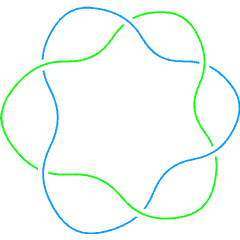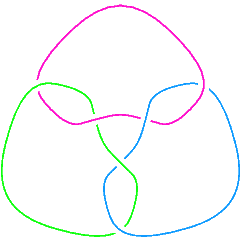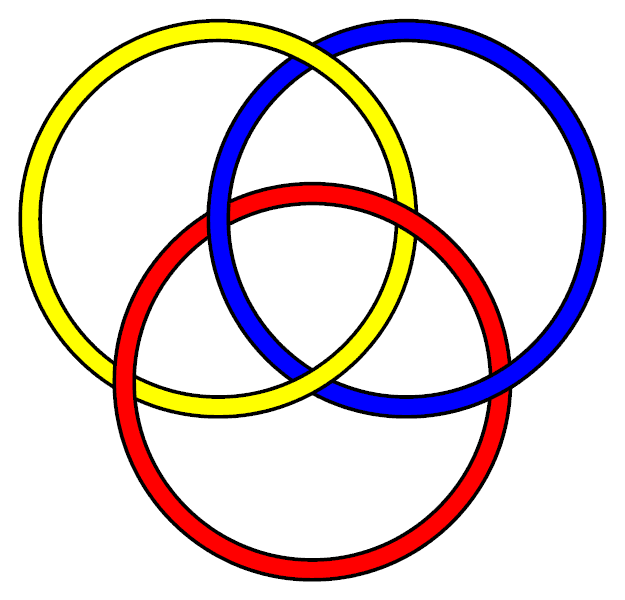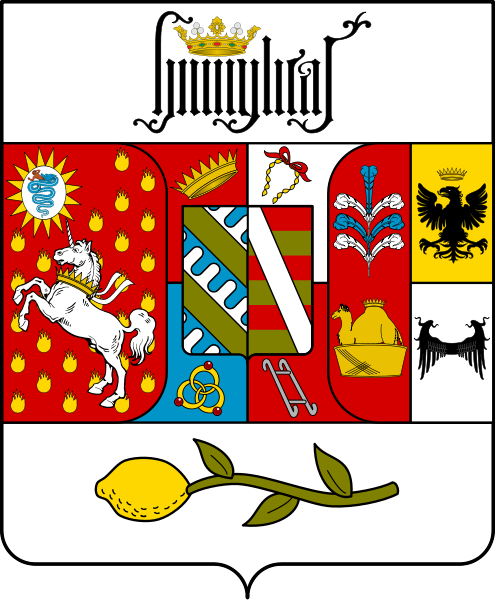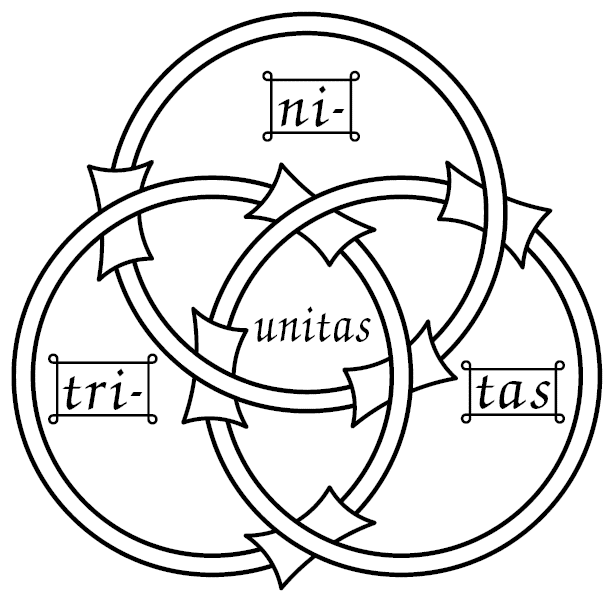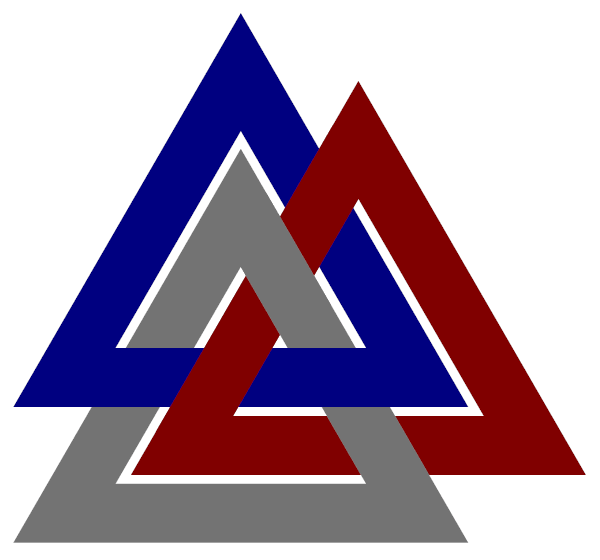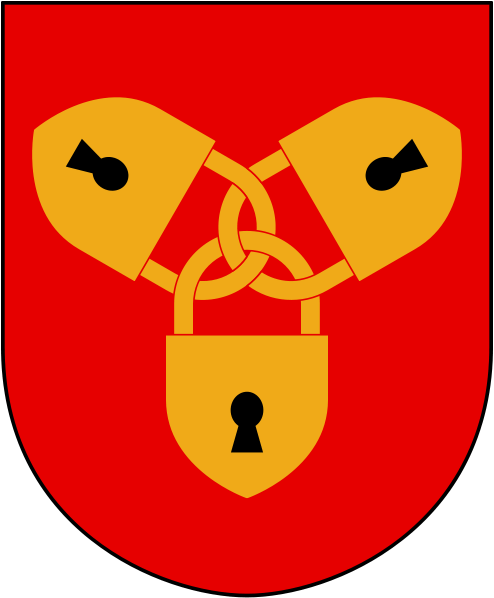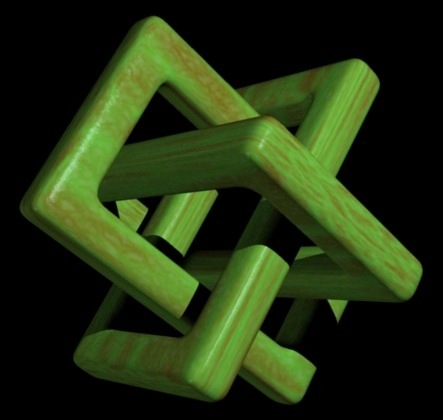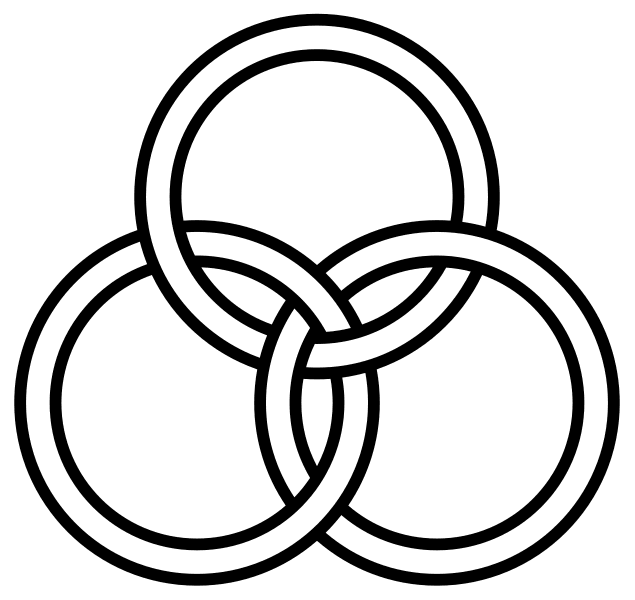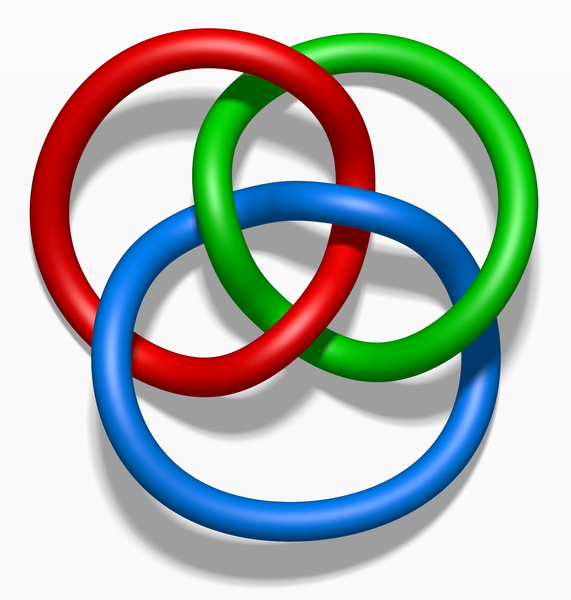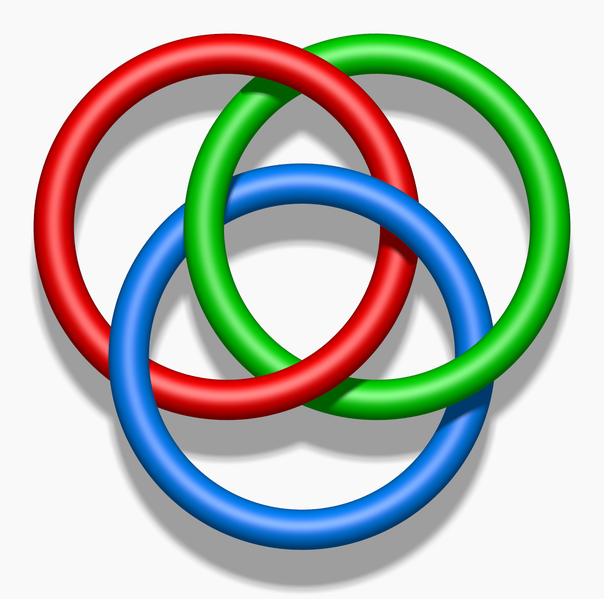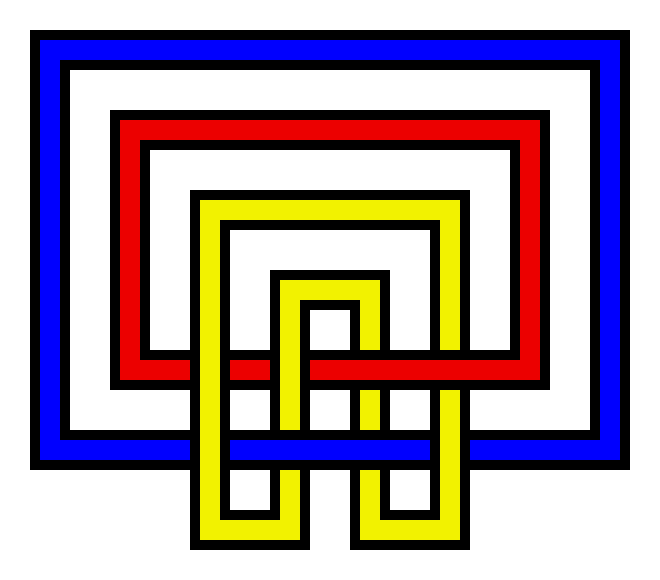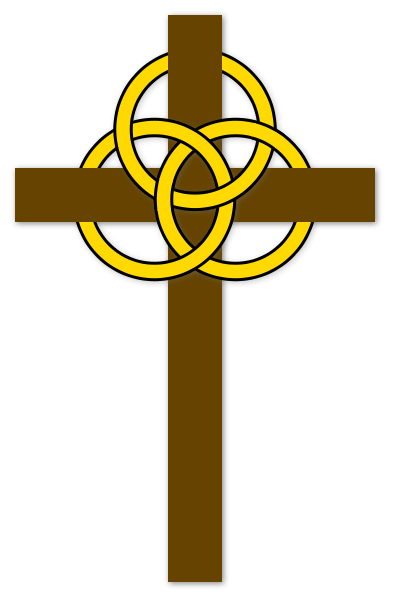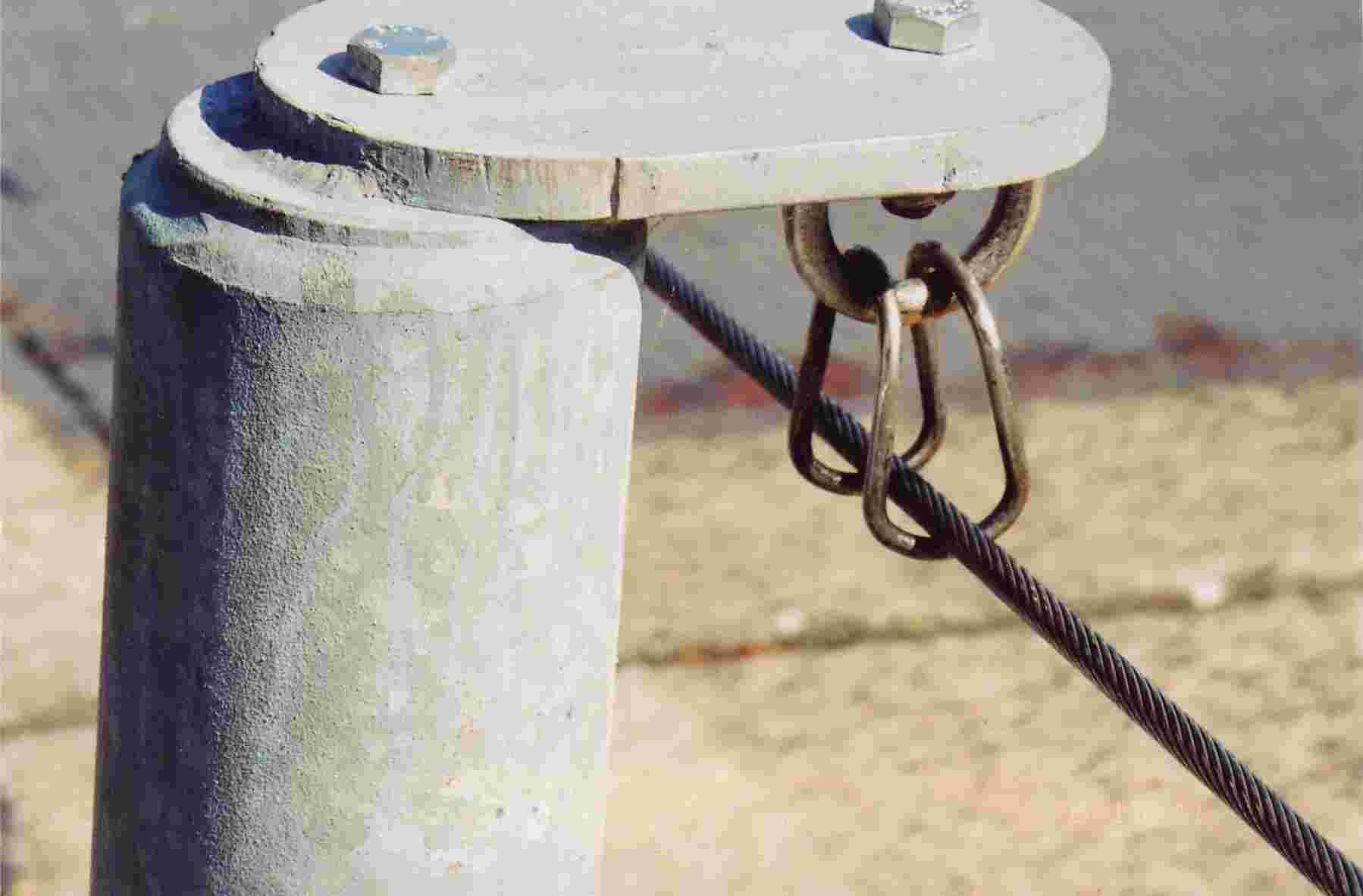L6a4
|
|
|
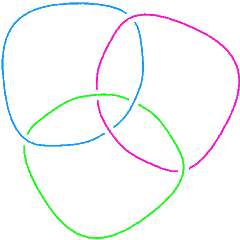
|
Visit L6a4's page at Knotilus!
Visit L6a4's page at the original Knot Atlas! |
| The link L6a4 is in the Rolfsen table of links.
It is also known as the "Borromean Link" or the "Borromean Rings". A Brunnian link - no two loops are linked directly together, but all three rings are collectively interlinked [9]. Visit Peter Cromwell's page on the Borromean Rings. |
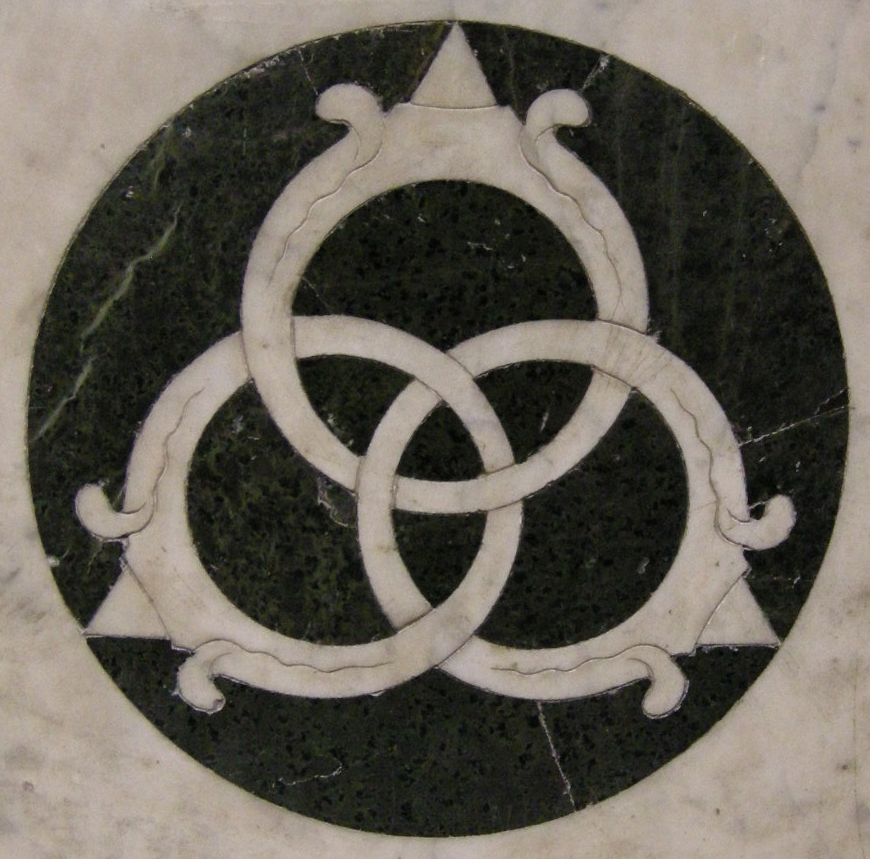 Medieval-style representation of the Borromean rings, used as an emblem of Lorenzo de Medici in San Pancrazio, Florence[1] |
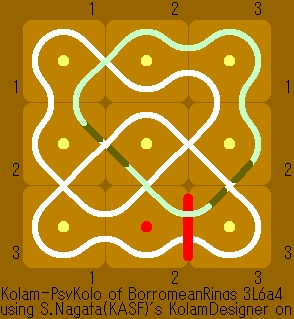 A kolam with 3 cycles [2] |
||
 The Colombo Mall in Lisboa [3] |
|||
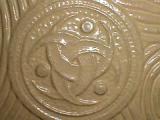 A "Borromean" bathroom tile (the Diane de Poitiers three interlaced crescents emblem) [4] |
 A Borromean link at the Fields Institute [5] |
||
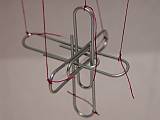 Borromean paper clips [6] |
 A Borromean link by Dylan Thurston [7] | ||
 A Borromean rattle by Sassy [8] |
Knot presentations
| Planar diagram presentation | X6172 X12,8,9,7 X4,12,1,11 X10,5,11,6 X8453 X2,9,3,10 |
| Gauss code | {1, -6, 5, -3}, {4, -1, 2, -5}, {6, -4, 3, -2} |
Polynomial invariants
| Multivariable Alexander Polynomial (in , , , ...) | (db) |
| Jones polynomial | (db) |
| Signature | 0 (db) |
| HOMFLY-PT polynomial | (db) |
| Kauffman polynomial | (db) |
Vassiliev invariants
| V2 and V3: | (0, 0) |
| V2,1 through V6,9: |
|
V2,1 through V6,9 were provided by Petr Dunin-Barkowski <barkovs@itep.ru>, Andrey Smirnov <asmirnov@itep.ru>, and Alexei Sleptsov <sleptsov@itep.ru> and uploaded on October 2010 by User:Drorbn. Note that they are normalized differently than V2 and V3.
Khovanov Homology
| The coefficients of the monomials are shown, along with their alternating sums (fixed , alternation over ). The squares with yellow highlighting are those on the "critical diagonals", where or , where 0 is the signature of L6a4. Nonzero entries off the critical diagonals (if any exist) are highlighted in red. |
|
| Integral Khovanov Homology
(db, data source) |
|
Computer Talk
Much of the above data can be recomputed by Mathematica using the package KnotTheory`. See A Sample KnotTheory` Session.
In[1]:= |
<< KnotTheory` |
Loading KnotTheory` (version of August 17, 2005, 14:44:34)... | |
In[2]:= | Crossings[Link[6, Alternating, 4]] |
Out[2]= | 6 |
In[3]:= | PD[Link[6, Alternating, 4]] |
Out[3]= | PD[X[6, 1, 7, 2], X[12, 8, 9, 7], X[4, 12, 1, 11], X[10, 5, 11, 6], X[8, 4, 5, 3], X[2, 9, 3, 10]] |
In[4]:= | GaussCode[Link[6, Alternating, 4]] |
Out[4]= | GaussCode[{1, -6, 5, -3}, {4, -1, 2, -5}, {6, -4, 3, -2}] |
In[5]:= | BR[Link[6, Alternating, 4]] |
Out[5]= | BR[Link[6, Alternating, 4]] |
In[6]:= | alex = Alexander[Link[6, Alternating, 4]][t] |
Out[6]= | ComplexInfinity |
In[7]:= | Conway[Link[6, Alternating, 4]][z] |
Out[7]= | ComplexInfinity |
In[8]:= | Select[AllKnots[], (alex === Alexander[#][t])&] |
Out[8]= | {} |
In[9]:= | {KnotDet[Link[6, Alternating, 4]], KnotSignature[Link[6, Alternating, 4]]} |
Out[9]= | {Infinity, 0} |
In[10]:= | J=Jones[Link[6, Alternating, 4]][q] |
Out[10]= | -3 3 2 2 3 |
In[11]:= | Select[AllKnots[], (J === Jones[#][q] || (J /. q-> 1/q) === Jones[#][q])&] |
Out[11]= | {} |
In[12]:= | A2Invariant[Link[6, Alternating, 4]][q] |
Out[12]= | -10 -8 2 3 6 2 4 6 8 10 |
In[13]:= | Kauffman[Link[6, Alternating, 4]][a, z] |
Out[13]= | 2 2 3 32 1 a 2 2 a 2 4 z 2 2 z z |
In[14]:= | {Vassiliev[2][Link[6, Alternating, 4]], Vassiliev[3][Link[6, Alternating, 4]]} |
Out[14]= | {0, 0} |
In[15]:= | Kh[Link[6, Alternating, 4]][q, t] |
Out[15]= | 4 1 2 1 2 3 2 5 2 7 3 |
